Analysis: Estonian forest - an attractive investment opportunity
Estonia
Estonia is the smallest and most northerly of the three Baltic countries. It has a landmass of 45 227 km2 and a population of 1.3 million people. The language is Estonian, a Finno-Ugric language closely related to Finnish. It is a member of NATO and the EU and the currency is the euro. It is a republic, has a stable parliamentary, democratic, "right-of-centre government" and an expanding, open economy.
During the financial crisis, the Baltic states were badly hit, and they suffered large reductions in GDP and increased unemployment. However, they took their medicine bravely and the recovery is well under way with some of the largest growth in GDP in the Euro-zone.
Taxation
There is no corporation tax in Estonia, so annual profits are not taxed as long as they stay in the company. However, there is a 20% distribution tax on the capital gain, which is payable when funds are paid to investors or the company is liquidated. As Estonia has a dual taxation system with many countries, in some circumstances the tax need not be paid in Estonia. It is recommended to take specialist advice on issues of taxation.
Timber industry
The timber industry is amongst the most modern in the world and dominated by Finnish Stora Enso. However, Swedish, German and Norwegian companies have also large timber-processing industries, as well as considerable home-grown enterprises. Increasingly, much of the sawn timber is sold locally and given added value before exporting.
Of the home-grown industries, Latvijan Finieris is the largest. It has four birch veneer plants in the Baltics and one in Finland. Pulpwood is mostly exported to Sweden and Finland. There is a medium-sized conifer pulpmill and a large aspen pulpmill, but no facilitates for the production of birch pulp.
However, biomass has also become a major industry and there are a considerable number of wood-using combined heat and power plants. A million m3 wood pellet plant has recently opened in southern Estonia.
Like Estonia, Latvia has a large, modern timber-using industry. As both countries are part of the EU “Schengen” area, the borders are open and timber can move freely between the countries.
Figure 10.4.2.2
Average roadside prices of roundwood in 1996-2020 and by months in 2020 (EUR/m3, excl VAT)
Source: xxxxxxx
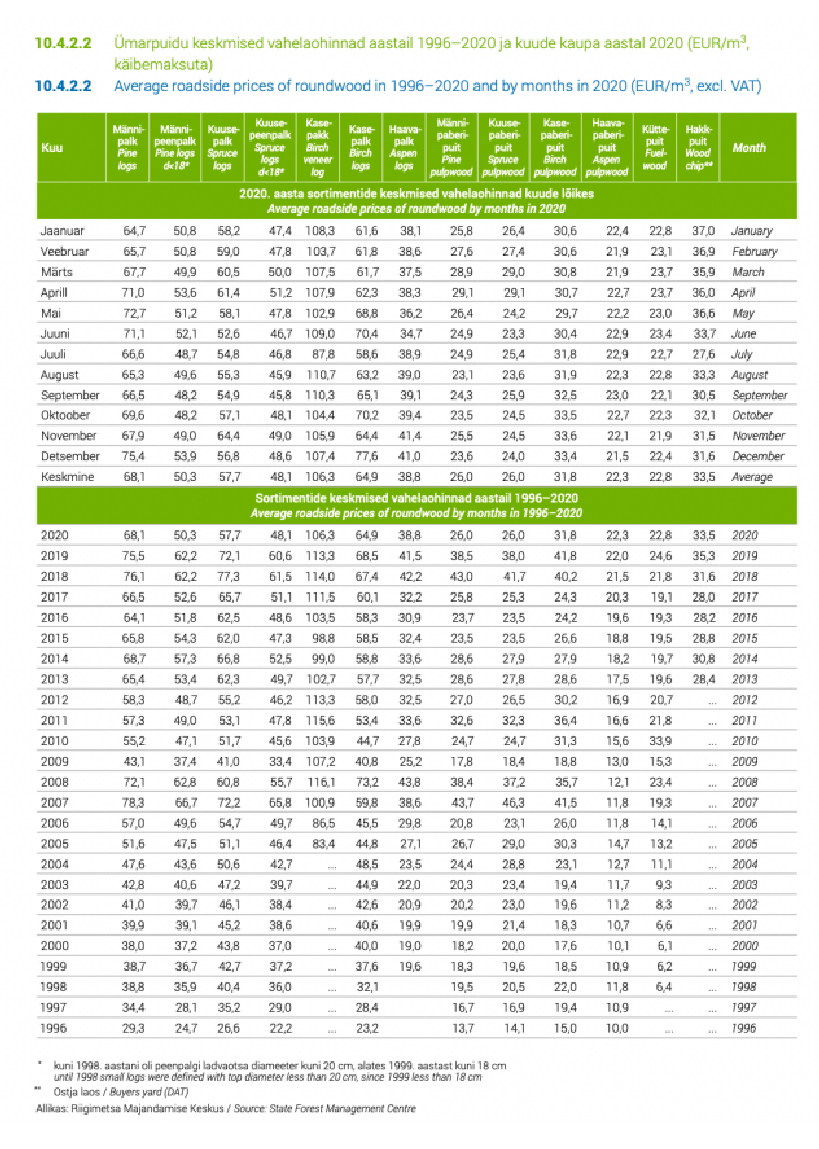
Figure 10.4.2.1.1
Distribution of sold roundwood by timber assortments in 2020
Source: xxxxxxx
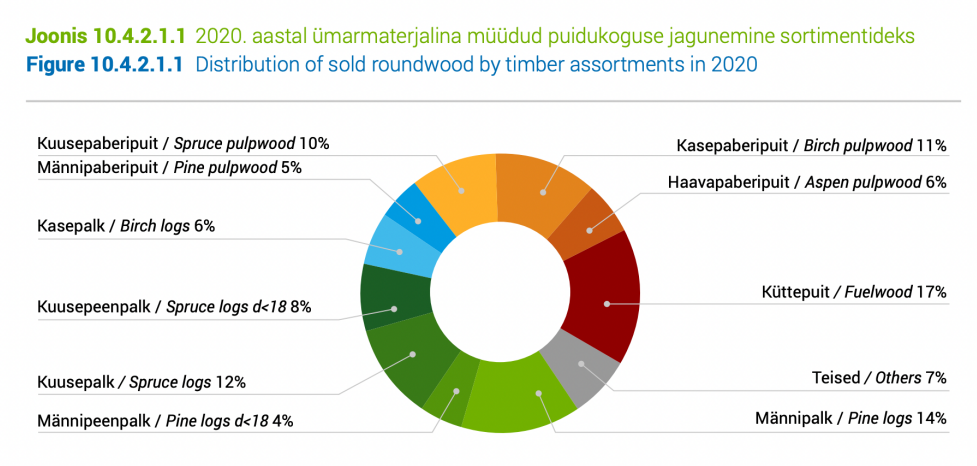
Figure 10.4.2.1
Sales of roundwood by assortments in 2008-2020 (m3)
Source: xxxxxxx
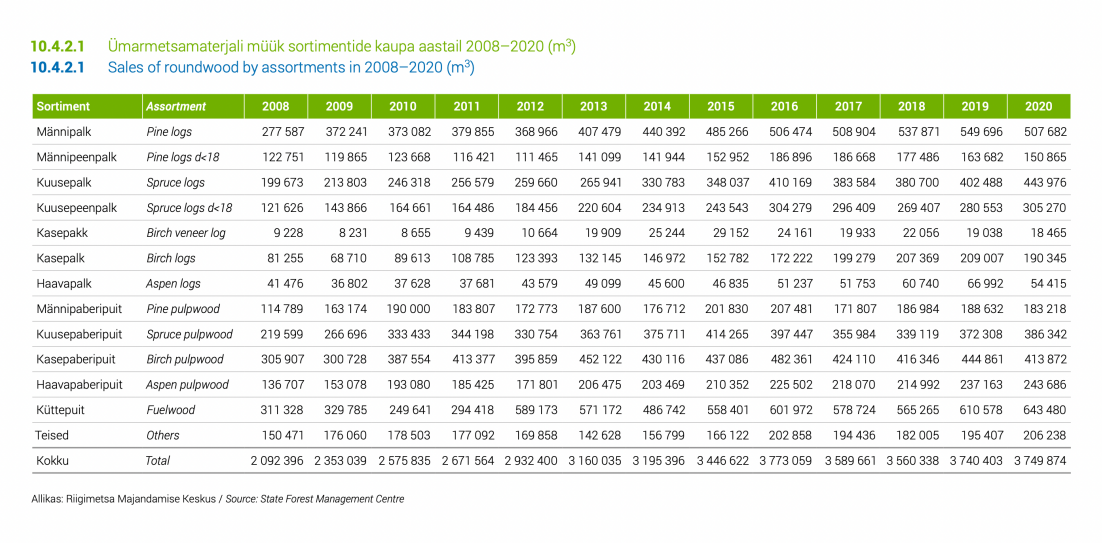
Figure 2.3.1
Area of forest land sold in 2001-2021
Source: xxxxxxx
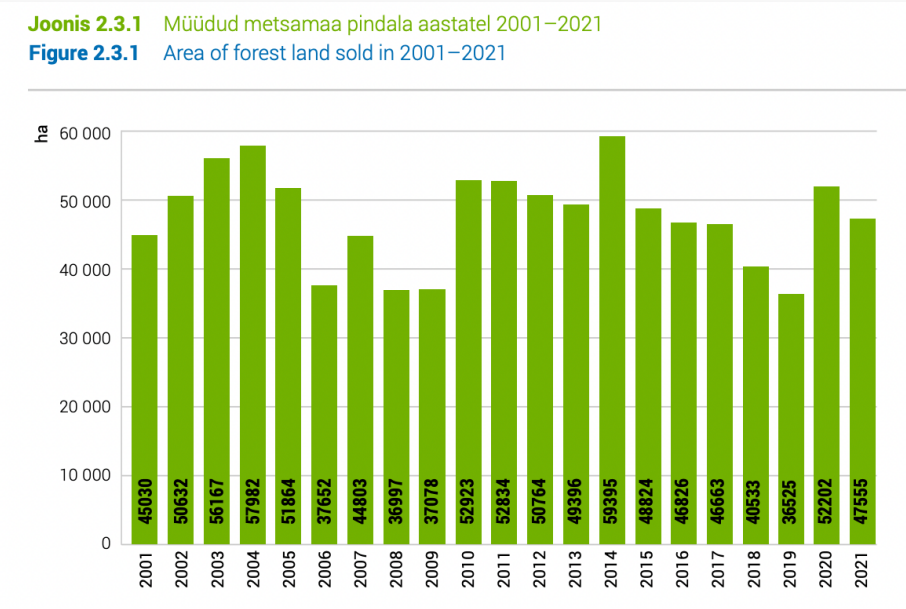
Figure 2.3.2
Sales prices of forest land in 1996-2021
Source: xxxxxxx

Figure 2.3.4
Average sales prices of forest land by countries in 2020-2021
Source: xxxxxxx
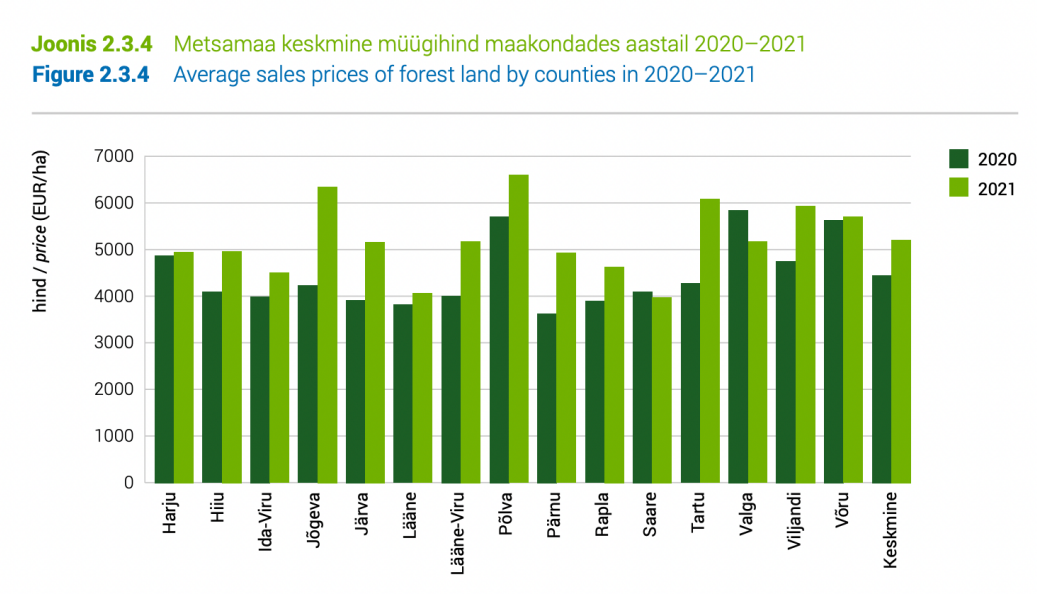
Conclusion
Forest is part of the so-called alternative types of investment, and putting money in trees differs from more traditional investments such as stocks and bonds by not being so sensitive to the economic development of society. Forest is a relatively safe investment and with good opportunities for a future economic gain.
Investing in forests provides a stable return with a relatively low risk. Moreover, this type of investment spreads the risk, it is flexible and is not affected by the same factors as other more traditional investments. For example, if the price of wood is one year low, you can fell less and leave the trees until the price is higher. The trees increase in value with age because larger trees can be used in the processing industry for e.g., furniture, floorboards and pulp. The remaining wood, which is not suitable for use in the wood processing industry, is typically chopped into chips and sold to heat and power plants, etc.
In addition to a stable operating profit, one can, over a number of years, expect a significant economic gain on a forest property. Over the past many years, forest prices have been rising because the industry is demanding more and more wood for its products. In practice, the trade price of the forest is determined by supply / demand in the local area where the properties are located, the quality of the wood and by how much has been harvested.
The investment structure is simple and transparent, where the investor typically owns his own forests via a local, forest-owning company. This ensures that you as an investor can decide to increase your investment or make a full or partial exit at any time. This structure also provides good opportunities for optimization in relation to tax.
The whole world is currently focusing on the climate, so forest investments are facing a bright future, just like e.g., wind turbines and photovoltaic systems, etc. which are naturally together in a sustainable portfolio.
Property investment is one of the things that many people want to get started with - but an incorrect image of how high the entry barrier is deters many from actively investing in real estate with operating and cyclical gains as a business area.
The analysis confirms that the average value of forests in Estonia grows every year. For comparison, the average trading prices have doubled from 2016 to 2020. An economic gain of approx. 20% per year. (See fig 2.3.2)
Jesper Kjær ApS has developed and brokered investment projects in Poland, Lithuania, Latvia and Estonia since 2001 and agriculture since 2003. Over the years, we have developed a large and efficient network with whom we intensively collaborate to provide the best bargains to our investors. We have direct contact with many forest owners who want, or are considering, selling forest plots. We offer our knowledge, experience and network for the mediation of forests in the Baltics, directly from owner to investor. We can always offer to mediate both smaller plots or a large number of hectares of forest.
We have collected a small bouquet of investment opportunities on this page , but please contact us as most transactions are done as discrete sales.
Author: Martin Ilja
